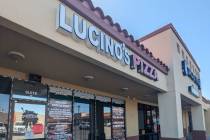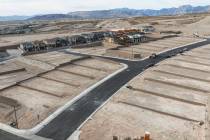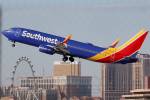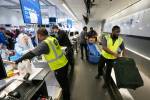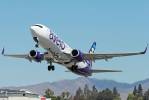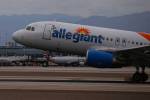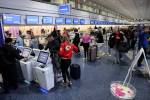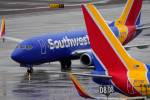Rising fuel prices curtail Allegiant’s growth plans
Allegiant's Travel Co.'s February traffic report highlighted the economic headwinds that rapidly rising fuel prices have put in the path not only of the airline but the Las Vegas economy.
The company, which operates carrier Allegiant Air, projected that its systemwide second-quarter flight count will fall in a range of a 1 percent gain to 3 percent decline compared with last year. Just two months ago, the forecast called for an increase of 5 percent to 9 percent.
In a similar vein, Delta, American and the commonly owned United and Continental all announced in the past couple of weeks that they would trim their future flight schedules to counter the rising aviation-fuel bills. This comes as airline seat counts at McCarran International Airport, the arrival point for 42 percent of Las Vegas' visitors, were starting rebound after four years of declines.
None of the airlines detailed specific routes to drop.
Allegiant President Andrew Levy said the pump price his company pays at McCarran for aviation fuel has risen 16 percent since the start of the year to $3.16 a gallon on Friday. Because the airline caters predominantly to leisure passengers, who shy away from higher fares much more quickly than business travelers on expense accounts, Allegiant's first weapon against rising fuel prices is to scrub its least-profitable flights and curtail expansion.
"If oil continues to go higher, we will continue to have to look at our capacity plans," Levy said.
During February, Allegiant's passenger count on scheduled flights rose 1.9 percent compared with one year ago to 414,000, even as the number of miles the carrier flew dropped by 3 percent. The departure count rose slightly, but the average flight length dropped by 3.6 percent to 915 miles.
Last year, Allegiant was the seventh-busiest carrier at McCarran with 1.95 million passengers, a 5.8 percent rise from 2009.
However, the revenue that Allegiant generates for each mile it flies is on track to rise 9 percent to 11 percent during the first quarter, due partly to increasing ancillary charges. Also, Levy said, fewer seats on a given route allows the airline to charge higher average fares.
Other airlines have also quickly increased ticket prices along with fuel. Experts peg the number of fare boosts at anywhere from five to 12.
Contact reporter Tim O'Reiley at
toreiley@reviewjournal.com or 702-387-5290.












